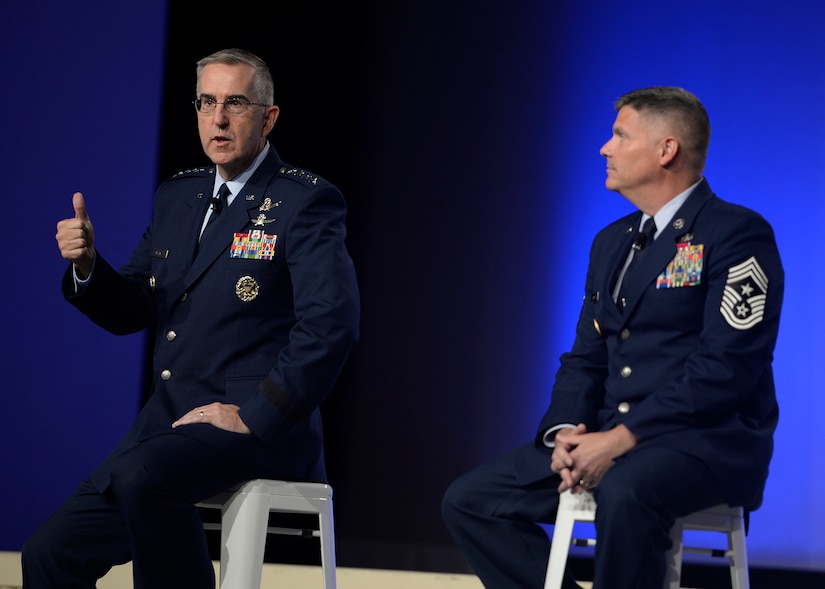By Jim Garamone, DoD News, Defense Media Activity
WASHINGTON -- The multidomain battlefield requires a degree
of integration that the U.S. military is coming to grips with, the commander of
U.S. Strategic Command said here yesterday.
Four-star Air Force general and Air Force command chief
master sergeant speak at Air Force Association conference.
Air Force Gen. John E. Hyten spoke about the struggle to
adapt to the multidomain battlefield at the Air Force Association’s annual
meeting.
Stratcom has its headquarters in Omaha, Nebraska, which once
was the headquarters for the Air Force’s Strategic Air Command. SAC had the
nuclear bomber and nuclear missile mission for the country. Its motto was
“Peace is our profession.”
Hyten resurrected the SAC motto when he became commander,
but he added ellipses at the end to remind possible adversaries that if “they
don’t want peace, we can go a different direction,” the general said.
At its heart, the command provides for strategic deterrence
and nuclear operations. The command oversees 1,550 deployed nuclear weapons and
is the most powerful command in the world, yet those weapons alone do not deter
“everyone from everything,” Hyten said.
Since the command formed in 2002, a number of missions
migrated to it, Hyten said. “Space came in, network operations came in, cyber
came in, countering weapons of mass destruction came in, [intelligence,
surveillance and reconnaissance] came in, missile defense came in, electronic
warfare came in, analysis and warfare came in,” he said. “We formed all these
functional commands for all these things. When I got there, we were down to 18
different components under Stratcom.”
This has changed, and now ISR is under the Joint Staff, and
countering weapons of mass destruction is now under U.S. Special Operations
Command. U.S. Space Command will be a global command in the future.
Strategic Deterrence Across All Domains
The changed environment requires a change in strategic
deterrence to cross all domains, Hyten said. “The most important priority is to
prevent the use of nuclear weapons on our country or allies and prevent the
creation of catastrophic space or cyberspace actions that damage our nation,”
the general said. “That requires the integration of all capabilities – nukes,
global strike, cyber, conventional – all to deliver our deterrent effect.”
Hyten added that he also wants to know how this shift
affects the current military command structure.
“We have five global combatant commanders and six geographic
combatant commanders,” the general said. “And those five global combatant
commanders, to one aspect or another, can deliver global fires. Cyber Command
[and] Space Command will be able to deliver global fires. Stratcom will always
be able to deliver global fires, both conventional and nuclear. [U.S.
Transportation Command] enables everybody to deliver global fires.”
Currently, these fires are delivered around singular events
in an environment where the United States is not threatened in all global
domains, the Stratcom commander noted. “In the future,” he added, “there may be
a fight that goes on in space and cyberspace – globally – involving special
operations, involving Cybercom, all at the same time. What is our doctrine for
integrating the global fires of this nation and providing that in support of a
geographic combatant commander somewhere?
“We actually are just trying to figure this out right now,”
the general continued. “That’s multidomain operations at its core. How do we
integrate that so we can deter our adversaries? How do we integrate to deliver
global fire on the battlefield of the future? Global fires, theater fires –
they all have to be integrated in timing and tempo. That is unbelievably
difficult.”

No comments:
Post a Comment